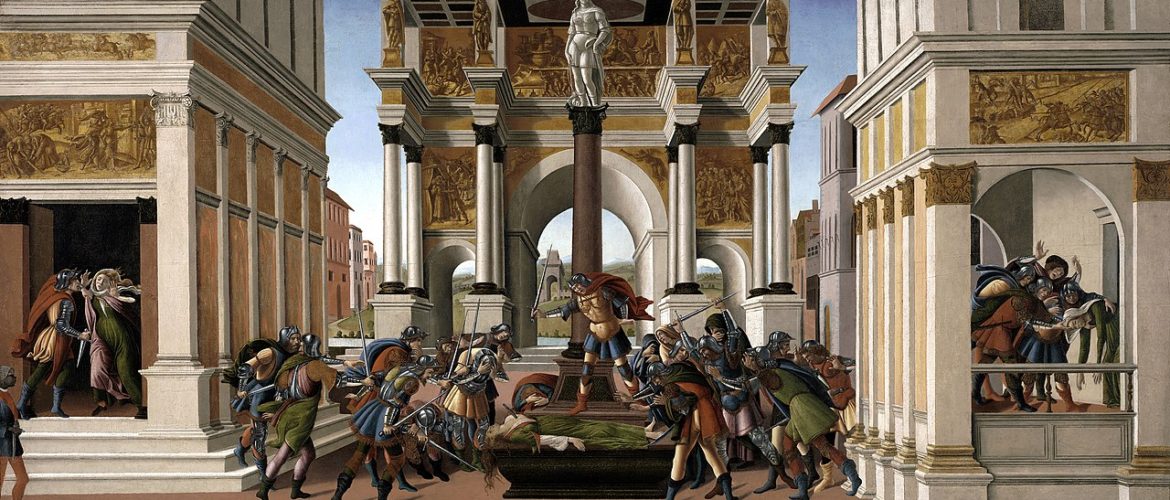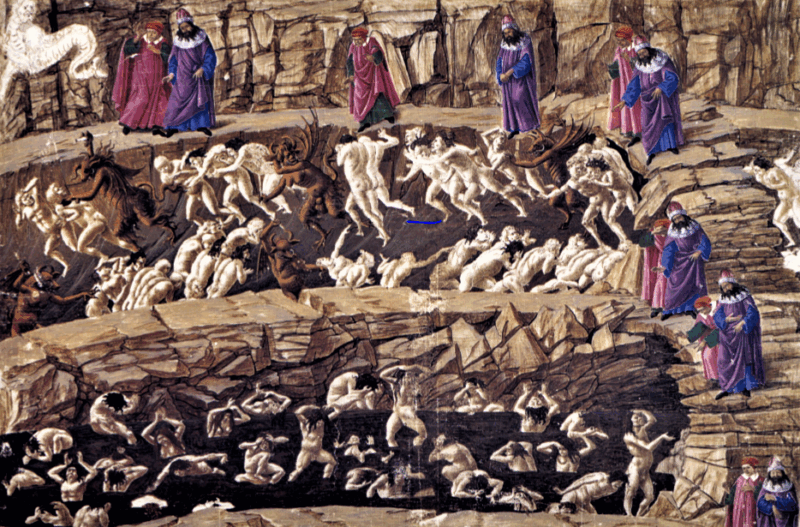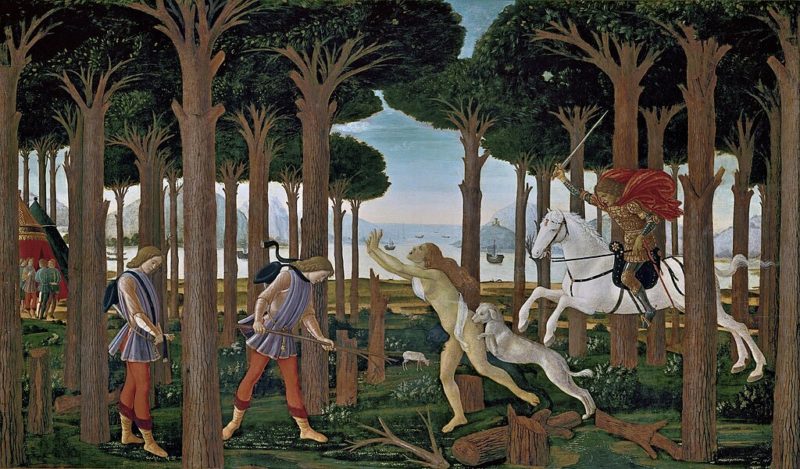The Dark Side of Botticelli Art: Lesser-Known Violent Themes

Sandro Botticelli was a world-famous Renaissance master whose dreamlike, positive images of beauty and grace have become iconic over time. However, floating goddesses and idyllic gardens are not the only themes in his art. The artist’s creative legacy also has a dark side, with gruesome illustrations and violent themes that balance the supernatural lightness and enchantment of globally known masterpieces. Here is a glimpse of the lesser-known side of Sandro Botticelli’s art.
Botticelli’s Ethereal Beauties and Angelic Images
Botticelli’s reputation during the reign of the Medici family was built primarily around his specialization in depicting sublime beauty. His auteur techniques, like compositional flatness and a lack of deep perspective, created the timeless, dreamlike effect of his angelic images. Thus, the artist’s name has been associated with paintings like The Birth of Venus and Primavera for many centuries.
The Dark Side of Botticelli: Illustrations for Dante’s Inferno
Botticelli’s sunlit, ethereal goddesses stand in sharp contrast to another page of his creative biography, namely a series of 92 illustrations for Dante’s Divine Comedy. The painter created those illustrations from 1480 to 1495 upon the commission of Lorenzo di Pierfrancesco de Medici. Most illustrations were dedicated to the depictions of Inferno, visualized by the painter as a vast, funnel-shaped abyss descending into the earth’s core.
Sandro Botticelli created his works with pen and ink, embellishing some of them with silverpoint and color, to depict the details of gruesome sinner punishments and torture. Today, this series is widely recognized as evidence of Botticelli’s deep engagement with medieval literature and his fascination with the themes of sin, punishment, and redemption. The haunting images created by the painter represent a puzzling fusion of horror, poetic symbolism, and beauty, typical of the majority of Botticelli’s artworks.
Lesser-Known Violent Narratives
Illustrations for Dante’s Divine Comedy are not the only example of the dark inclinations in Botticelli’s imagery. Other works with gruesome themes include The Story of Nastagio degli Onesti (1483), depicting a woman’s repeated murder in the cycle of eternal punishment, and The Story of Lucretia (1500), portraying a woman’s suicide after her rape. The scene of Judith beheading Holofernes and the martyrdom of saints also belong to the list of haunting, violent depictions of brutality, painted with emotional depth and unflinching detail.
Thus, one can see that Sandro Botticelli was a Renaissance master with diverse themes and creative interests. From the angelic beauty of goddesses to ghosts, suicide, and the horrors of the underworld, the artist was a genius in depicting all sides of human nature.


